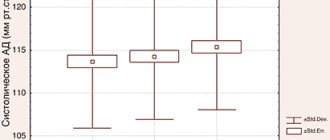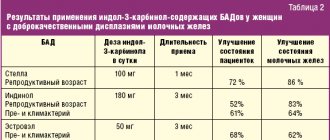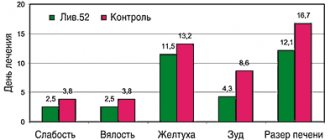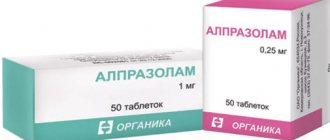Pharmacological properties of the drug Zopiclone
The first representative of a new class of psychotropic drugs - cyclopyrrolon derivatives, structurally different from benzodiazepines and barbiturates. The sedative and hypnotic effect is due to a high degree of affinity for binding sites on the GABA receptor complex in the central nervous system. After taking zopiclone, sleep quickly occurs, characterized by a normal phase structure and duration; The duration of the REM sleep phase does not decrease. The half-life is 5.5–6 hours. Repeated doses do not lead to the accumulation of zopiclone or its metabolites. Unlike benzodiazepine and barbiturate hypnotics, zopiclone does not cause post-somnia drowsiness and a feeling of weakness.
Special instructions for the use of Zopiclone
The use of zopiclone should be avoided during pregnancy and breastfeeding. Patients taking zopiclone should refrain from performing potentially hazardous activities that require increased alertness. Abrupt cessation of treatment does not cause the development of withdrawal syndrome. During treatment, you should avoid drinking alcohol and taking depressant psychotropic drugs. In cases of use of zopiclone for myasthenia gravis, strict neurological monitoring must be ensured due to the possible increase in muscle weakness.
Zopiclone-LF tablets po 7.5 mg No. 10x3
Name
Zopiclone-LF tablet, po, 7.5 mg in container pack No. 10x3
Description
Round tablets, green, biconvex in shape.
Main active ingredient
Zopiclone
Release form
Film-coated tablets.
Dosage
7.5 mg
Pharmacological properties
Zopiclone is a hypnotic that rapidly initiates and maintains sleep without reducing overall paradoxical sleep and maintains slow-wave sleep. Minor residual effects are observed the morning after use of zopiclone. Pharmacological properties of zopiclone include hypnotic, sedative, anxiolytic, anticonvulsant and muscle relaxant effects.
Indications for use
Zopiclone is used to treat the following sleep problems in adults:
- difficulty falling asleep;
- night awakenings;
- early awakenings;
- severe sleep disorders.
Zopiclone can be used to treat both temporary and chronic insomnia. However, Zopiclone is not intended for daily use over a long period of time or for the treatment of depression. If you have any doubts or questions, consult your doctor.
Directions for use and doses
Orally, without chewing or dissolving, immediately before bedtime. Doses The dose should be adjusted depending on the patient's age, body weight, general health and type of insomnia. Treatment should begin with the lowest effective dose. Adults under 65 years of age: 7.5 mg once daily. Patients over 65 years of age: The recommended starting dose is 3.75 mg. Based on efficacy and tolerability, the dose may be increased as clinically necessary. Patients with renal impairment: Accumulation of zopiclone and its metabolites has not been observed in the treatment of insomnia in patients with renal impairment. However, it is recommended to start treatment of such patients with a dose of 3.75 mg. Patients with hepatic impairment: Since the elimination of zopiclone may be reduced in patients with hepatic impairment, the recommended dose is 3.75 mg. The 7.5 mg dose should be used with caution only in exceptional cases, depending on the effectiveness and tolerability of the drug. Patients with chronic pulmonary insufficiency: the recommended initial dose is 3.75 mg, if necessary the dose can be increased to 7.5 mg. In all cases, the dose should not exceed 7.5 mg per day. Children Zopiclone should not be used in children under 18 years of age. The safety and effectiveness of zopiclone in children under 18 years of age have not been established. Duration of treatment Treatment should be as short as possible, ranging from a few days to 2-4 weeks (maximum), including a period of dose reduction. Situational insomnia (for example, during travel) – 2-5 days, short-term insomnia – 2-3 weeks. If a low dose is necessary, the use of other medications containing zopiclone is recommended. Before starting to use the drug, patients should be explained that therapy should not be long-term and how to gradually stop it. Gradual cessation of treatment reduces the risk of recurrence of insomnia. To reduce anxiety possibly associated with discontinuation of the drug, the patient should be warned about the possibility of recurrence of insomnia after discontinuation of treatment. If you miss the next dose of the drug, you must take it. But you should not use a double dose of the drug to replace the missed one. You should continue taking the medicine according to your doctor's recommendations. If you have any doubts or questions, contact your healthcare provider.
Use during pregnancy and lactation
Pregnancy There is limited human experience with the use of zopiclone during pregnancy. Animal studies have not revealed any negative effects on pregnancy and fetal development. However, use during pregnancy is not recommended. Patients should be warned by their doctor about the need to discontinue use of the drug if they are planning a pregnancy or suspect pregnancy. When prescribing the drug in the third trimester of pregnancy or during childbirth, symptoms such as hypothermia, hypotension, drowsiness and respiratory depression should be expected in the newborn. Newborns whose mothers took benzodiazepines or their analogues during the latter stages of pregnancy may develop physical dependence and are at risk of developing withdrawal symptoms in the postnatal period. Lactation Zopiclone is excreted into breast milk. Although the concentration of zopiclone in breast milk is low, the drug should be avoided during breastfeeding.
Impact on the ability to drive vehicles or potentially dangerous mechanisms
Due to its pharmacological properties and ability to affect the central nervous system, zopiclone may have an adverse effect on the ability to drive vehicles or operate potentially dangerous machinery. The risk of developing psychomotor impairment, including the ability to drive, increases:
- if zopiclone is taken within 12 hours before performing activities that require concentration and speed of psychomotor reactions;
- when using the drug in doses exceeding the recommended;
- when zopiclone is used concomitantly with drugs that depress the central nervous system, alcohol, or drugs that increase the concentration of zopiclone in the blood.
After taking zopiclone, especially during the first 12 hours after taking it, patients should refrain from engaging in hazardous activities that require alertness or psychomotor speed (such as operating machinery or driving vehicles).
Precautionary measures
Whenever possible, the cause of insomnia should be determined and possible precipitating factors should be eliminated before prescribing a sleeping pill. Benzodiazepines and benzodiazepine-like drugs are not prescribed as primary agents in the treatment of psychosis. To reduce the risk of developing symptoms when discontinuing the drug, treatment with zopiclone should be short-term or intermittent. High-risk groups - greatest caution should be exercised in cases where there is a history of alcoholism or addiction/dependence on other substances; - patients with impaired liver function, because benzodiazepines and benzodiazepine-like drugs in severe liver failure can accelerate the development of encephalopathy, so in this case they are contraindicated; - patients with respiratory failure, because benzodiazepines and their derivatives can depress the respiratory center (restlessness and anxiety can be harbingers of respiratory decompensation); - elderly patients, because muscle relaxant and sedative effects may lead to injury due to falls. Risk of addiction Treatment with benzodiazepines and their derivatives, especially long-term, even in therapeutic doses, can lead to physical and mental dependence. The risk of addiction increases in the presence of the following factors: - exceeding the recommended dose of zopiclone (7.5 mg); - increasing the duration of treatment (more than 4 weeks); - alcohol abuse and/or taking other psychotropic medications; - anxiety. If the patient has developed a physical dependence, sudden cessation of zopiclone may lead to the development of withdrawal symptoms: headache, muscle pain, anxiety, restlessness, tension, irritability, confusion. In more severe cases, symptoms may include derealization, depersonalization, numbness and tingling in the extremities, increased sensitivity to light, noise and touch, hallucinations or epileptic seizures. After stopping treatment, withdrawal symptoms may appear within a few days. When treatment with zopiclone lasts no more than 4 weeks, the likelihood of developing withdrawal symptoms is minimal. It is recommended to discontinue the drug gradually. Depression Benzodiazepines and benzodiazepine-like drugs should not be used in the monotherapy of depression or the treatment of anxiety caused by depression, as they may induce suicide. Tolerance Some loss of effectiveness may occur with benzodiazepines and their derivatives after repeated use over several weeks. In patients taking zopiclone for no more than 4 weeks, cases of addiction were not observed. If tolerance develops, the dose of the drug cannot be increased. The phenomenon of “recoil” When therapy with benzodiazepines and their derivatives is stopped in an intensified form, insomnia may resume, anxiety, restlessness, and mood changes may appear. The appearance of the syndrome is facilitated by long-term treatment or abrupt cessation of treatment. In this regard, upon completion of treatment, it is recommended to gradually reduce the dose of the drug and inform the patient about this. Amnesia Rarely, antegrade amnesia may occur, especially when sleep is interrupted or after a long period of time between taking the pill and going to bed. To reduce the risk of antegrade amnesia, you should take zopiclone immediately before bedtime and ensure conditions for 7-8 hours of uninterrupted sleep. Psychomotor disturbances Like other sedative/hypnotics, zopiclone has a depressant effect on the central nervous system. The risk of developing psychomotor impairment, including impaired ability to drive, increases: - if zopiclone is taken within 12 hours before performing actions that require concentration and speed of psychomotor reactions; - when using zopiclone in doses exceeding the recommended ones; - when zopiclone is used together with other central nervous system depressants, alcohol or drugs that increase the concentration of zopiclone in the blood. After taking zopiclone, and especially during the first 12 hours after taking it, patients should refrain from engaging in hazardous activities that require alertness or psychomotor speed (such as operating machinery or driving vehicles). Sleepwalking and related behaviors (eg, preparing and eating food, talking on the phone, driving) followed by amnesia have been reported in patients who have taken zopiclone and are not fully awake. Concomitant use of drugs that depress the central nervous system with zopiclone, alcohol consumption, and exceeding recommended doses increases the risk of developing this disorder. In patients who report such behavior disorder, the drug should be discontinued. Other psychiatric and paradoxical reactions During treatment with zopiclone, paradoxical reactions have been reported in some patients, mostly elderly: increased insomnia, nightmares, restlessness, agitation, irritability, aggressiveness, fits of anger, delirium, hallucinations, oneiric delirium, confusion, psychotic symptoms , inappropriate behavior and other behavioral disorders. If such reactions occur, the drug should be discontinued. Risk of accumulation Benzodiazepines and their analogues remain in the body for a time equal to 5 half-lives. In patients with impaired liver function and the elderly, the half-life of zopiclone may be significantly prolonged. With repeated doses, the concentration of zopiclone and its metabolites in the blood plasma is higher and the saturation stage is reached later. The effectiveness and safety of the drug can be assessed after reaching the saturation stage. Dose adjustment may be required. Despite the fact that in patients with impaired renal function no accumulation of zopiclone was detected during long-term use, the dose of the drug is reduced by 2 times. During treatment with zopiclone, you should not drink alcohol, and you should also avoid taking medications containing ethanol.
Interaction with other drugs
Always tell your doctor what medications you are taking or have recently taken, even if they are over-the-counter medications. Alcohol The simultaneous use of zopiclone with alcohol increases the sedative effect of benzodiazepines or benzodiazepine-like drugs. Inhibited attention may affect the patient's ability to drive or operate machinery. You should avoid drinking alcoholic beverages and medications containing ethyl alcohol. Morphine derivatives (painkillers, cough suppressants and replacement therapy), barbiturates – increased risk of respiratory depression; An overdose can result in death. Concomitant use with drugs that depress the central nervous system: morphine derivatives (painkillers, cough suppressants and replacement therapy), barbiturates, antidepressants and H1-antihistamines with sedative action, anti-anxiety drugs, antipsychotic drugs, clonidine and its analogues, thalidomide - enhanced depressant actions on the central nervous system. Inhibited attention may affect the patient's ability to drive or operate machinery. Clozapine Increased risk of shock with respiratory arrest and/or cardiac arrest. Erythromycin The effect of erythromycin on the pharmacokinetics of zopiclone was studied in 10 healthy individuals. In the presence of erythromycin, the AUC of zopiclone increases by 80%, indicating the ability of erythromycin to inhibit the metabolism of drugs that are metabolized by CYP3A4. As a result, the hypnotic effects of zopiclone may be enhanced. Since zopiclone metabolizes the cytochrome P450 (CYP) 3A4 isoenzyme, when co-administered with CYP 3A4 inhibitors, such as erythromycin, clarithromycin, ketoconazole, itraconazole and ritonavir, plasma levels of zopiclone may increase. When used concomitantly with CYP3A4 inhibitors, a dose reduction of zopiclone may be necessary. On the contrary, when used simultaneously with CYP3A4 inducers, for example, rifampicin, carbamazepine, phenobarbital, phenytoin and St. John's wort, the plasma level of zopiclone may decrease. When used concomitantly with CYP3A4 inducers, an increase in the dose of zopiclone may be necessary.
Contraindications
- hypersensitivity to zopiclone or to any of the auxiliary components of the drug;
- severe respiratory failure;
- severe liver failure;
- sleep apnea syndrome;
- myasthenia gravis;
- pregnancy and lactation;
- children under 18 years of age;
- rare congenital lactose intolerance, Lapp lactase deficiency or glucose-galactose malabsorption.
Compound
Each Zopiclone-LF tablet contains: active substance: zopiclone – 7.5 mg. excipients: microcrystalline cellulose, sodium starch glycolate (type A), magnesium stearate, calcium hydrogen phosphate dihydrate, lactose monohydrate, Opadry II (green) (partially hydrolyzed polyvinyl alcohol, titanium dioxide E 171, macrogol/PEG, talc, indigo carmine aluminum hydroxide E 132 , quinoline yellow aluminum varnish E 104).
Overdose
Symptoms Symptoms of overdose depend on the dose of the drug taken and are manifested by signs of depression of the central nervous system (CNS), ranging from drowsiness to the development of a coma. In mild cases, overdose is accompanied by drowsiness, confusion, and lethargy; in more severe cases, ataxia, hypotension, methemoglobinemia, respiratory depression and coma appear. Overdose is not life-threatening unless other CNS depressants, including alcohol, were used concomitantly. Other risk factors, such as concurrent illness and poor health of the patient, can increase the severity of symptoms and, in very rare cases, cause death. Treatment Within an hour after an overdose of zopiclone, it is necessary to rinse the stomach and give activated charcoal. If necessary, symptomatic and supportive therapy in a hospital setting with monitoring of respiratory and cardiovascular activity is recommended. In severe cases, the benzodiazepine receptor antagonist flumazenil can be used as an antidote. It has a short half-life (about an hour). Flumazenil should not be used in cases of mixed overdose or as a diagnostic agent. In case of drug overdose, hemodialysis is not effective due to the large volume of distribution of zopiclone.
Side effect
The most commonly observed adverse reaction is a bitter or metallic taste in the mouth. Other possible adverse reactions are listed below. Their appearance is associated with individual sensitivity; they are most often observed within an hour after application, if the patient does not immediately go to bed and fall asleep. In the following, the listed side effects are ordered according to the classification of groups of organ systems and MedDRA frequency: very often (>1/10), often (>1/100 to 1/1,000 to 1/10,000 to
Storage conditions
In a place protected from moisture and light at a temperature not exceeding 25? C. Keep out of the reach of children.







